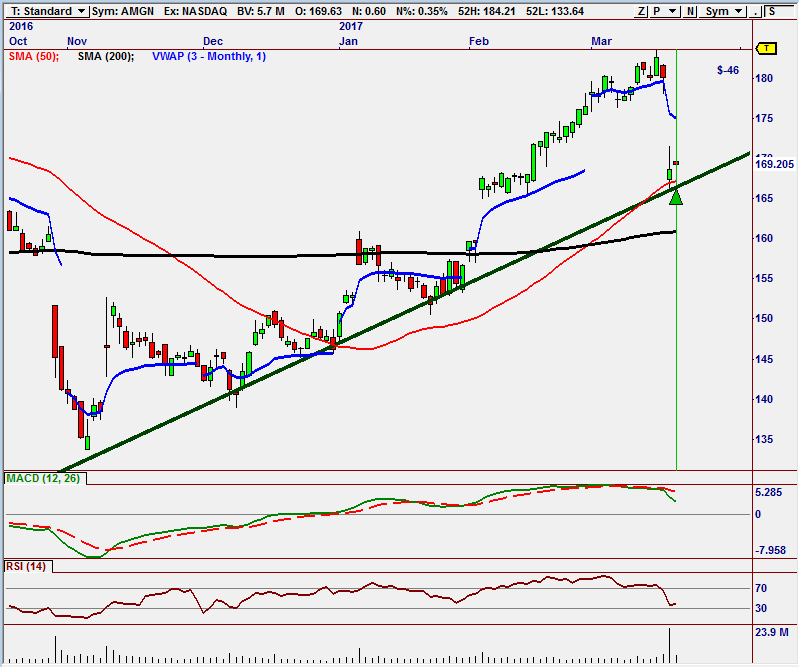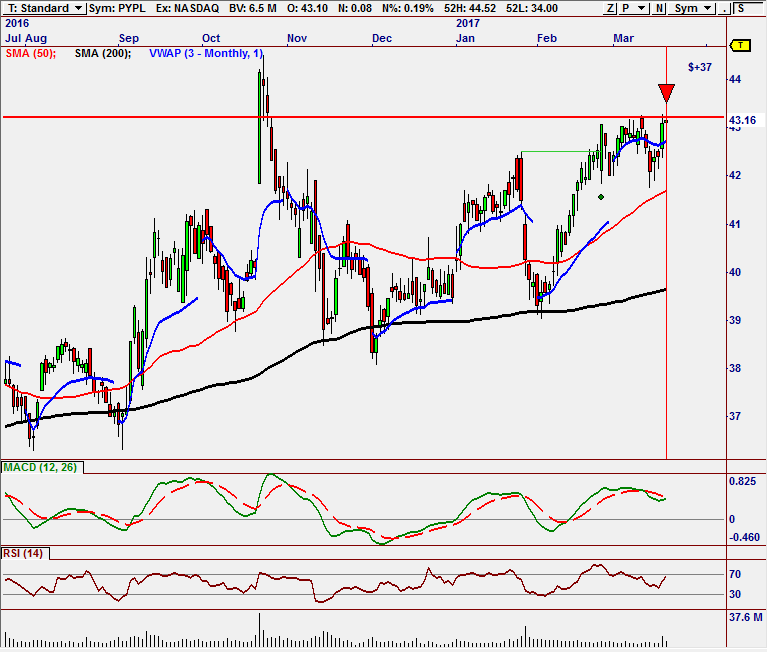- You are here:
- Home »
- Today's Trades »
- SW’s Signals of the Day – 3.20.17

SW’s Signals of the Day – 3.20.17
SignalWatch - 3.20.17
The week started off with a whimper as the indexes moved little, closing mixed. The Dow and the S&P 500 both closed lower while the Nasdaq snagged a tiny .01% gain. The Nasdaq got the day off to an interesting start by setting a new all-time intraday high, but things calmed down very, very quickly in the wake of no economic news. We have three mixed signals tonight, two buy signals and one sell signal. Let’s take a look.
Like always, we crunched the market through our servers and strategies and we’ve got our newest entry signals. It’s the first time in a long while we are featuring mixed signals. So let’s jump into it.
MS-16 Strategy

AMGN could potentially pull off an interesting reversion move in the next few days.
AMGN took a big punch to the teeth late last week after announcing that one of its drug trials had disappointing results. After the announcement, the stock took a might tumble as we can plainly see. But… it hit the breaks at support and the 50 SMA, which could put it into position for a reversion move.
AMGN has been in a steady uptrend since November. Even though the pullback is quite dramatic, it is forming a higher low and that is why our MS-16 strategy pulled the trigger on a new signal. MS-16 has a strategy and scan combo that searches for stocks that outperforming the market but has also undergone large pullbacks against their overall trend, just like we see with AMGN. The strategy also takes earnings dates into account to keep us out of extra volatile situations.
If the strategy gets this move right, we could see a quick reversion move up to $175.
![]()

PYPL could be setting itself up for a dip according to GT Momentum.
PYPL is testing resistance for the 4th time this month. Each time PYPL has tested resistance in the past month, it has failed to move through resistance at $43.25. It also looks like this could be the top of a newly developed trading range that began late last month. If this is the case and Paypal takes a turn for the downside, look for it to run into the $42.50-$42 zone.
This signal was fired by our GT Momentum strategy that is found in GroupTrader 3.0. GroupTrader 3 focuses on looking at industry group rotations and finds stocks that are lagging behind their industry group, allowing one to get a nice entry into the lagging stock. To learn more, check out its PDF.


A new Guppy signal has fired on FDX.
FDX has been trading along its monthly VWAP indicator for most of the month and it is finally trying to make a break from it. After pushing higher, it pulled back some today but it is still primed and ready for a new push. Volume is on the rise and the MACD bullish crossover has occurred. If it pushed through resistance at $195, it could make a run to the $200 zone.
The GMMA 2.0 plug-in fired off this new signal. The GMMA is based on 12 different moving averages. It is the composite picture of these averages that provides a powerful view of a trend. When the long-term group is widely separated it shows strong investor commitment to the trend. When the two groups of averages are consistently separated it shows trend consistency because traders are not prepared to let prices retreat too far before they become buyers again. The relationship in each group of averages and the relationships between the groups provide the primary analysis for the application of the GMMA. And this analysis is independent of price. The original GMMA is a powerful concept that has helped many OmniTrader users over the years. The new TVL method builds on the GMMA to provide a powerful, systematic way to trade with the trend and stay with it.
That’s it for this evening, check back tomorrow afternoon for more new signals.
Past performance is no guarantee of future results. Inherent in any investment is the potential for loss. This material is being provided for informational purposes only and nothing herein constitutes investment, legal, accounting or tax advice, or a recommendation to buy, sell or hold a security. No recommendation or advice is being given as to whether any investment is suitable for a particular investor. It should not be assumed that any investments in securities, companies, sectors or markets identified and described were or will be profitable.
